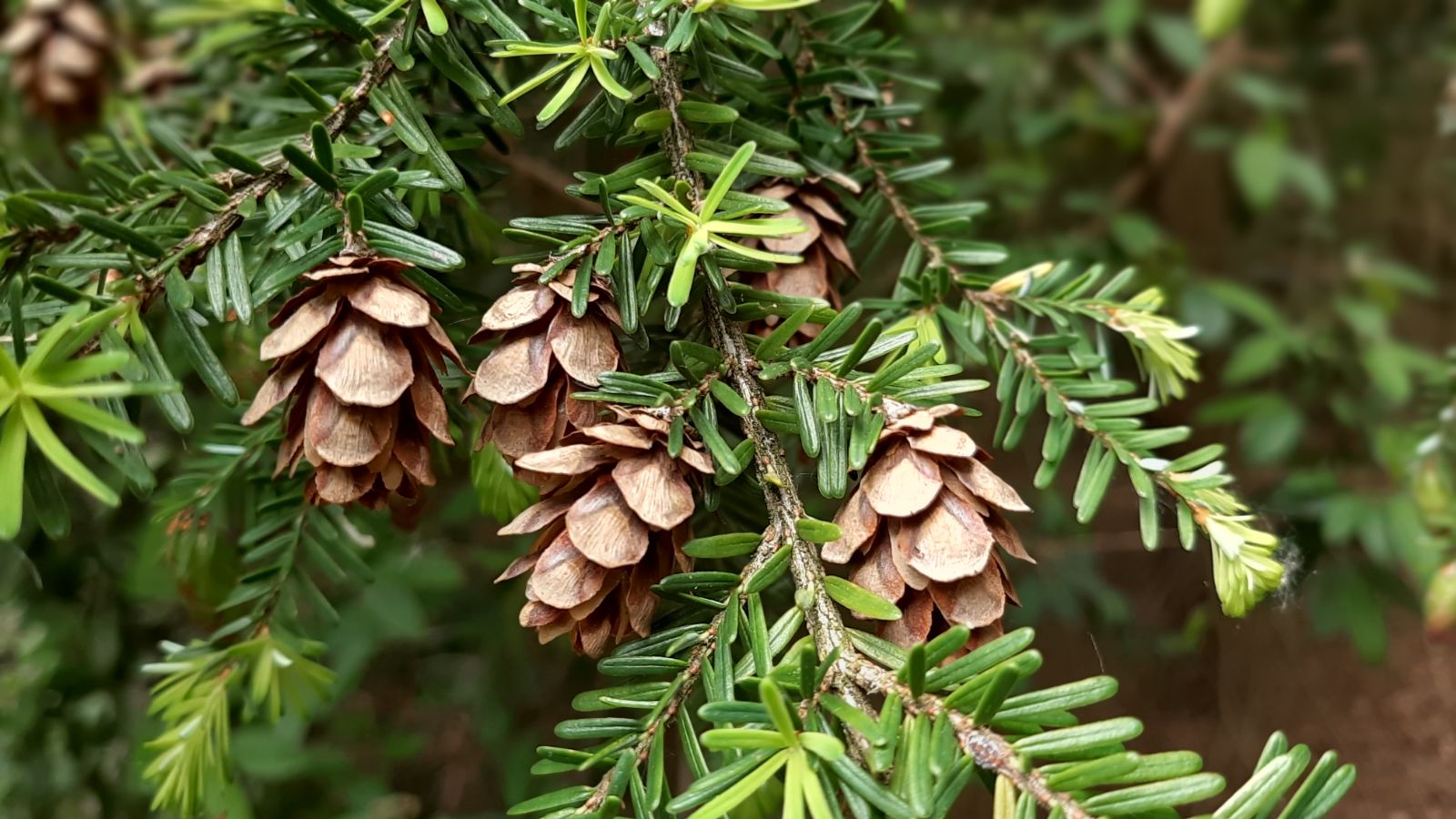
Tsuga, commonly known as hemlock, is a genus of coniferous trees in the pine family. These majestic trees are native to North America and Asia, thriving in cool, moist environments. Did you know that Tsuga trees can live for over 800 years? Their wood is lightweight yet strong, making it valuable for construction and paper production. Hemlocks also play a crucial role in forest ecosystems, providing habitat and food for various wildlife species. Despite their importance, these trees face threats from pests like the hemlock woolly adelgid. Understanding more about Tsuga can help us appreciate and protect these incredible trees.
Tsuga: The Hemlock Tree
Tsuga, commonly known as hemlock, is a genus of coniferous trees in the pine family. These trees are native to North America and Asia, and they play a crucial role in their ecosystems. Let's dive into some fascinating facts about Tsuga.
General Characteristics
Tsuga trees have unique features that set them apart from other conifers.
- Tsuga trees have flat, needle-like leaves that are usually dark green on top and lighter underneath.
- The bark of Tsuga trees is typically brown and deeply furrowed, providing a distinct texture.
- Tsuga trees produce small, woody cones that hang down from the branches and contain the seeds.
- These trees can grow to impressive heights, with some species reaching up to 200 feet tall.
- Tsuga trees are known for their graceful, drooping branches, which give them a distinctive appearance.
Habitat and Distribution
Understanding where Tsuga trees thrive can give us insight into their ecological importance.
- Tsuga trees are found in temperate forests across North America and Asia.
- In North America, they are commonly found in the eastern United States and the Pacific Northwest.
- Asian species of Tsuga are primarily located in China, Japan, and the Himalayas.
- These trees prefer cool, moist environments and are often found near streams and rivers.
- Tsuga trees play a vital role in their ecosystems by providing habitat and food for various wildlife species.
Ecological Importance
Tsuga trees are more than just beautiful; they are essential to their environments.
- The dense canopy of Tsuga trees helps to regulate temperature and moisture levels in the forest.
- Tsuga trees provide shelter and nesting sites for birds, mammals, and insects.
- The needles and bark of Tsuga trees are a food source for deer, rabbits, and other herbivores.
- Fallen Tsuga needles create a thick layer of mulch on the forest floor, enriching the soil.
- Tsuga trees help to prevent soil erosion by stabilizing the ground with their extensive root systems.
Cultural Significance
Tsuga trees have also found their way into human culture and history.
- In Japan, Tsuga wood is used in traditional carpentry and temple construction.
- Native American tribes have used Tsuga bark for medicinal purposes and as a source of tannin for tanning hides.
- Tsuga trees are often planted as ornamental trees in parks and gardens due to their attractive appearance.
- The essential oils extracted from Tsuga needles are used in aromatherapy and natural remedies.
- Tsuga trees have been depicted in art and literature, symbolizing strength and resilience.
Conservation and Threats
Despite their importance, Tsuga trees face several threats that endanger their survival.
- The hemlock woolly adelgid, an invasive insect, has devastated Tsuga populations in North America.
- Climate change poses a significant threat to Tsuga trees by altering their preferred habitats.
- Logging and deforestation have led to the loss of Tsuga forests in many areas.
- Conservation efforts are underway to protect and restore Tsuga populations through reforestation and pest management.
- Public awareness and education about the importance of Tsuga trees are crucial for their long-term survival.
The Final Word on Tsuga
Tsuga, or hemlock trees, are fascinating. These trees, with their unique needles and cones, play a crucial role in forest ecosystems. They provide shelter for wildlife and help maintain soil health. Despite their beauty and importance, hemlocks face threats from pests like the hemlock woolly adelgid. Conservation efforts are vital to protect these trees for future generations.
Understanding tsuga helps us appreciate the delicate balance of nature. Next time you see a hemlock, remember its significance. Whether you're a nature enthusiast or just curious, knowing these facts enriches your outdoor experiences. Hemlocks are more than just trees; they're a testament to nature's complexity and resilience. So, keep exploring and learning about the natural world around you. It’s full of wonders waiting to be discovered.
Was this page helpful?
Our commitment to delivering trustworthy and engaging content is at the heart of what we do. Each fact on our site is contributed by real users like you, bringing a wealth of diverse insights and information. To ensure the highest standards of accuracy and reliability, our dedicated editors meticulously review each submission. This process guarantees that the facts we share are not only fascinating but also credible. Trust in our commitment to quality and authenticity as you explore and learn with us.
